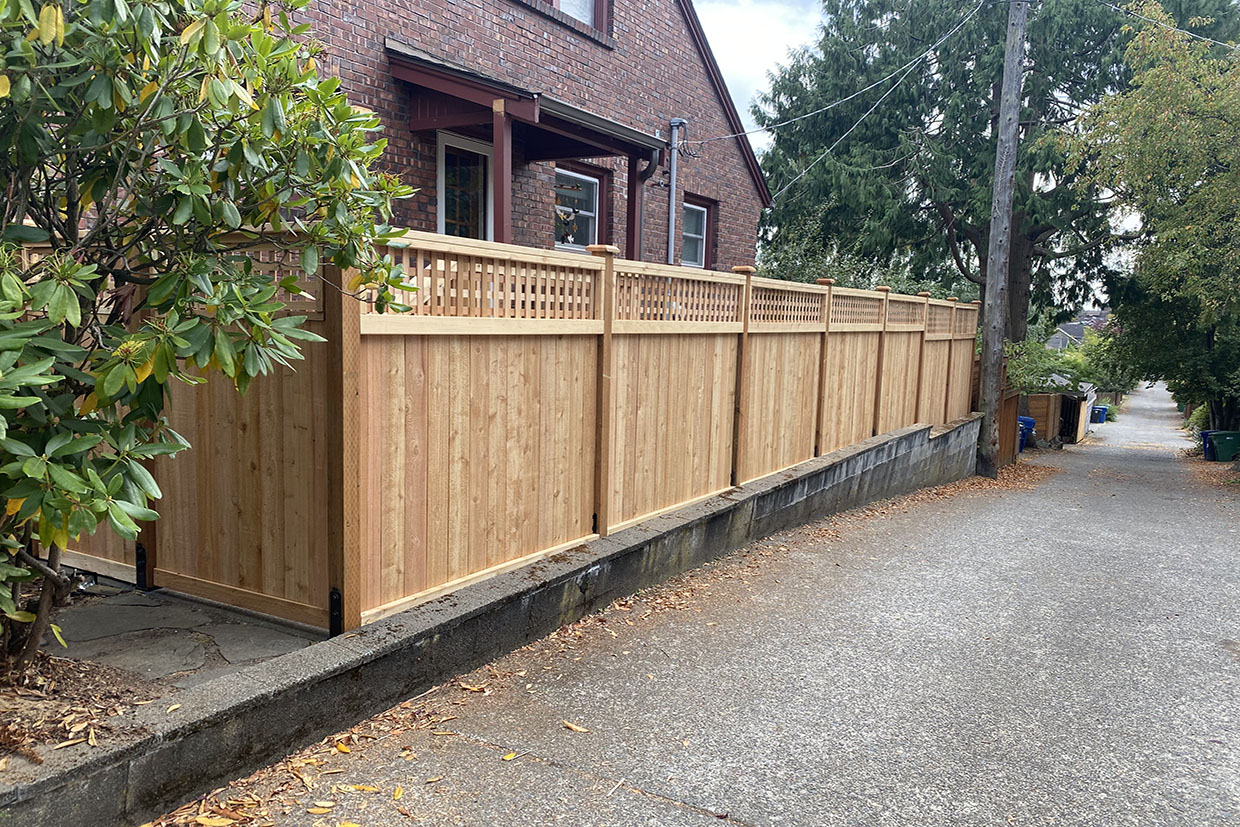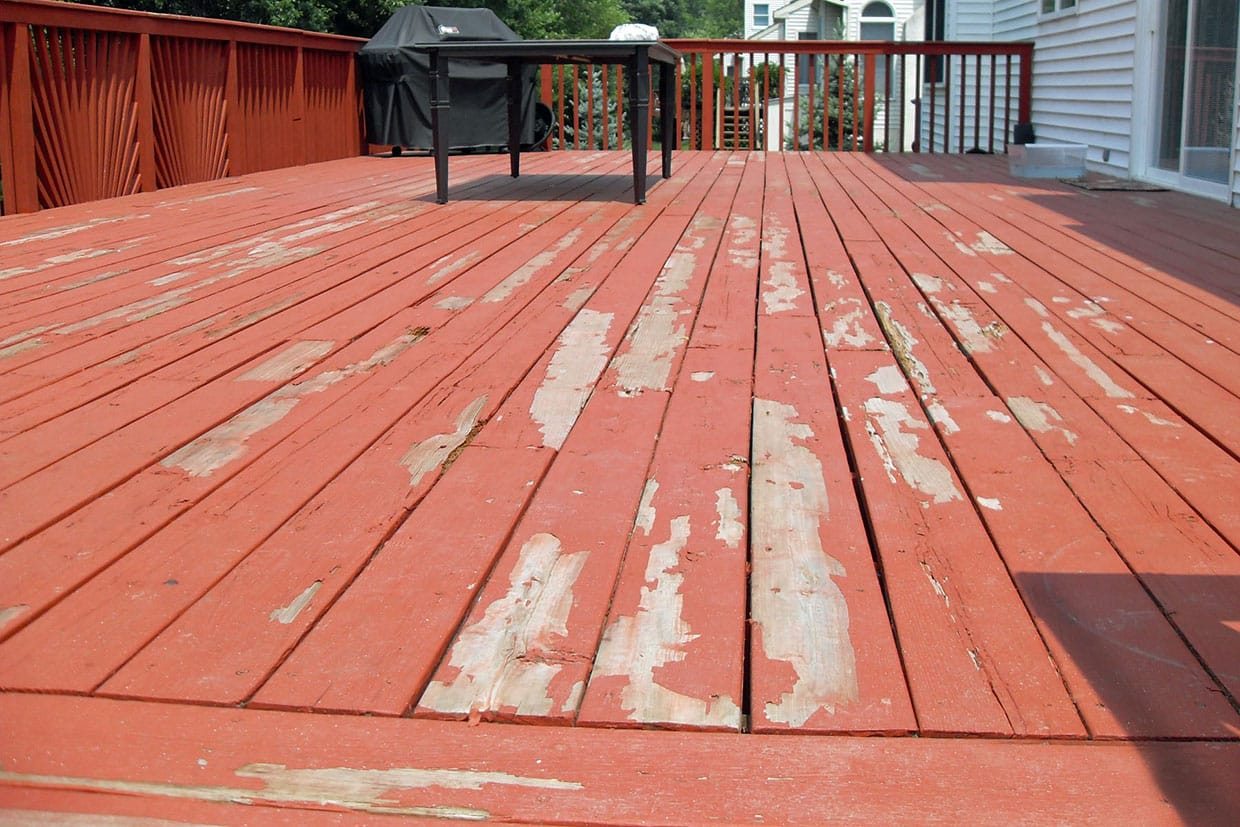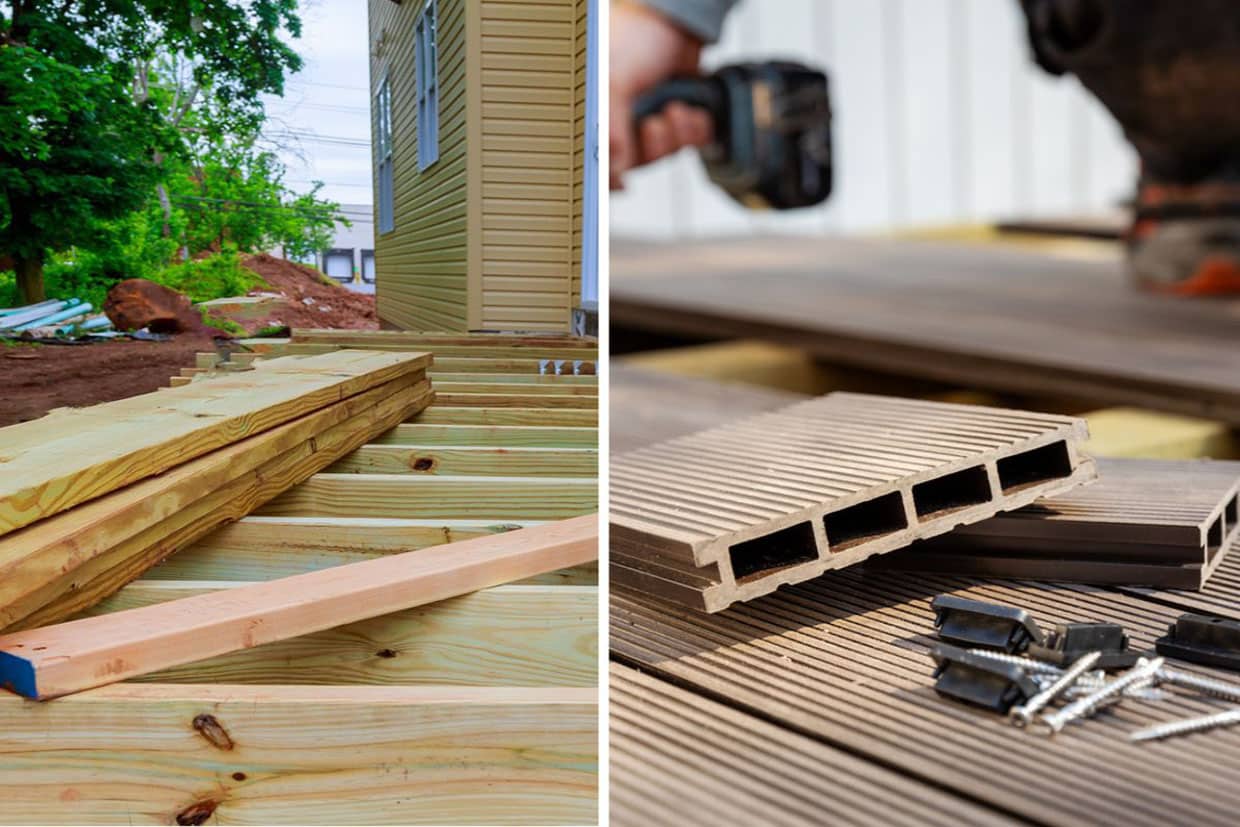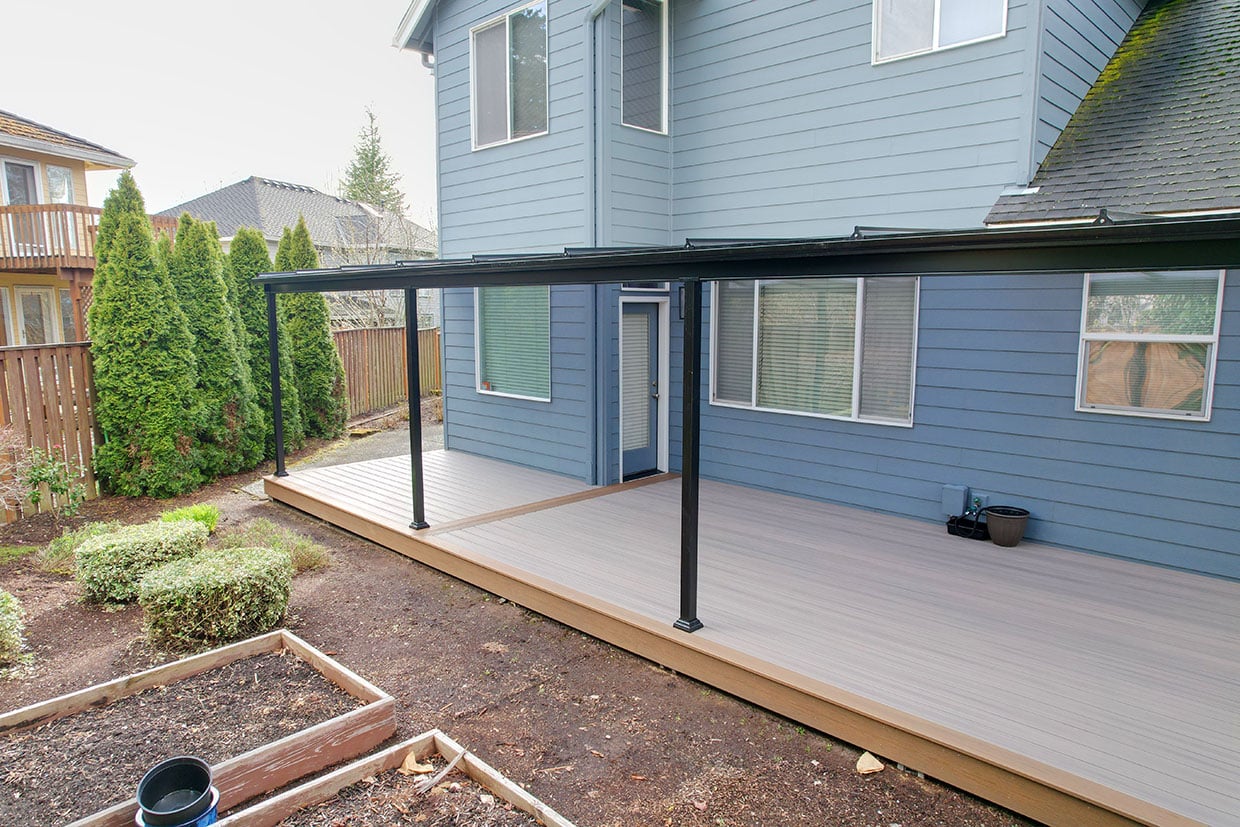
A ground level deck, as the name implies, is a deck that is built close to the ground. But there’s a reason that a floating deck stands out from the crowd. Unlike traditional raised decks that require railings and can be several feet off the ground, ground-level decks are typically less than 30 inches high and may not require safety railings, depending on local regulations.
The experts at Grand Decks have been building ground level decks for years, however, they are becoming more and more popular. Why, you ask? Here are just a few of the many reasons these decks are making a comeback in a big way!
Accessibility: Ground level decks are easy to access from your house to your yard, making them ideal for families with children, elderly people, or anyone with mobility issues.
Appearance: A Freestanding deck can seamlessly blend with your landscaping, creating a smooth transition from your home to your outdoor space. This can enhance the overall aesthetic appeal of your property.
Safety: Because they’re close to the ground, there’s a lower risk of injury from falls, which can be particularly beneficial for households with young children or pets.
Cost and Ease of Construction: Ground level decks often require fewer materials and are easier to build compared to raised decks, making them a more cost-effective option. These decks typically face less strict building regulations, which can simplify the construction process.
Versatility: These freestanding decks can serve as an outdoor dining area, a lounging space, or even an outdoor kitchen. The possibilities are vast, making them a versatile addition to any home.
Low Maintenance: Due to their simple design, ground level decks usually require less maintenance than elevated decks, which can be another attractive feature for homeowners.
The increased interest in outdoor living spaces combined with these practical and aesthetic advantages have contributed to the rising popularity of ground level decks. Keep reading to learn of the 5 benefits to building a ground level deck, and how Grand Decks can help make your own dream deck a reality!
Benefit #1: Easy and Quick to Build
If you want a new deck to enjoy this season, building a ground level deck could be the perfect choice for you! Constructing a freestanding deck involves a unique set of steps that differentiate it from the construction process of elevated or multi-level decks. Here’s a general comparison of the two:
Ground Level Deck Construction:
- Planning and Design: Determine the size, shape, and location of the deck. This phase also includes researching local building codes, as ground level decks may face different regulations than raised decks.
- Site Preparation: The area should be cleared of grass and other vegetation. While a ground level deck doesn’t necessarily require footings that go below the frost line, the area must be level, and a gravel base or concrete blocks are often used to support the deck’s structure.
- Frame Construction: Assemble the outer rim of the deck using pressure-treated wood, ensuring it’s level with the ground. Joists are then installed inside the frame, providing additional support.
- Decking Installation: Deck boards are attached to the frame, creating the deck surface. Homeowners can choose from a variety of materials, including wood and composite decking.
- Finishing Touches: Depending on the design, finishing touches might include adding built-in seating, planters, or a protective sealant to the deck.
Raised or Multi-Level Deck Construction:
- Planning and Design: Much like with a freestanding deck, you’ll need to determine the design and location. However, you may also need to consider additional elements like stairs, railings, and multiple levels.
- Site Preparation and Footings: Raised decks require the installation of footings deep into the ground, often below the frost line, to ensure stability.
- Post and Beam Construction: Posts are attached to the footings, and beams are then connected to the posts. This provides the main support for the deck.
- Frame Construction: Once the posts and beams are in place, the deck’s frame is built on top, including the rim joists and interior joists.
- Decking Installation: Just as with a ground level deck, deck boards are installed to create the deck’s surface. However, due to the complexities of building this type of deck, you may require a permit, additional footings, and deck support, which can be a lot more complex than your everyday DIY projects.
- Railings and Stairs: Due to their height, raised decks require railings for safety. If the deck is significantly above ground level, stairs will also need to be constructed.
- Finishing Touches: Final touches might include sealing or staining the deck, adding built-in features, or installing deck lighting.
Generally building a ground level deck can be less complex and time-consuming than constructing a raised or multi-level deck, as it avoids some of the more complicated steps like installing deep footings and railings. However, each type of deck has its own advantages and can be the right choice depending on a homeowner’s specific needs and preferences.
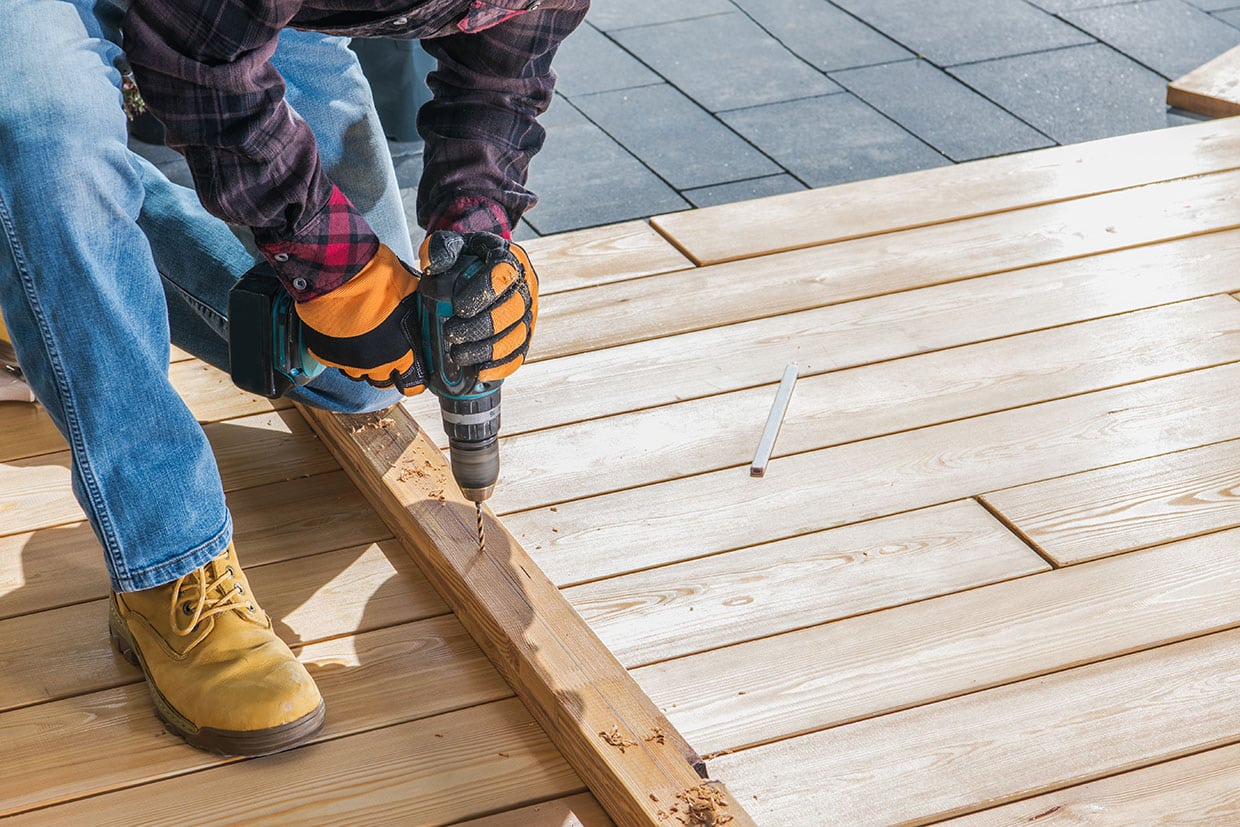
Benefit #2: Safer and More Accessible
A ground level deck is considered safer and more accessible compared to raised decks due to its proximity to the ground. The height of the deck is typically less than 30 inches, and in many cases, it might be only a few inches above the ground.
This low height drastically reduces the risk of injury from falls, a concern that is particularly significant for families with children, the elderly, or individuals with mobility issues. Additionally, the absence of stairs simplifies access to the deck, making it an ideal choice for those who prefer a seamless transition between indoor and outdoor spaces.
The safety and accessibility benefits of a ground level deck are as follows:
- Reduced Risk of Falls: Being close to the ground, any accidental trips or stumbles are less likely to result in serious injuries.
- Ease of Access: Without any stairs to navigate, a ground level deck is easily accessible to everyone, including children, seniors, and people with mobility challenges.
- No Need for Railings: Depending on local building codes, ground level decks usually don’t require railings, offering an unobstructed view and open feel.
- Less Obtrusive: Ground level decks blend seamlessly with the landscape, posing less of a tripping hazard and offering an easier walkway around the property.
- Safe for Pets: Pets can safely roam on and around a ground level deck without the fear of falling from a height.
Overall, the design of a ground level deck prioritizes safety and accessibility, making it a fantastic choice for homeowners seeking to create a welcoming and inclusive outdoor space.
Benefit #3: Cost-Effective Option
One of the biggest challenges to building a new deck is the costs associated with it. Luckily, Ground level decks can be a more cost-effective option for homeowners for several reasons:
- Simpler Construction: A freestanding deck require a less complex structure compared to elevated decks. This simplicity can lead to a reduction in labor hours needed for construction, which in turn can lower labor costs.
- Fewer Materials: Since ground level decks do not require features such as railings or stairs (unless desired), they can be constructed with fewer materials, leading to a reduction in overall material costs.
- Less Intensive Site Preparation: Ground level decks typically require less intense site preparation than raised decks. While the ground must be leveled, the process of digging and installing deep footings required for elevated decks is often not necessary for ground level decks.
- Lower Permit Costs: Depending on local building codes and regulations, ground level decks may not require a building permit or may be subject to lower permit fees than raised decks, resulting in additional cost savings.
- Reduced Maintenance Costs: Over time, a floating deck can also be cheaper to maintain. Without raised elements, such as railings and stairs, there are fewer components that might require repair or replacement down the line.
- Fewer Safety Features: Safety features, such as railings or balustrades, which can significantly add to the cost of a deck, are often not required for ground level decks.
It’s important to note that while ground level decks can be more cost-effective, the actual cost will depend on a variety of factors, including the size of the deck, the materials used, the complexity of the design, and local labor costs.

Benefit #4: Flexible Design Options
Ground level decks provide homeowners with a wide range of design possibilities, which is one of the reasons they’re so appealing. From the deck’s shape and size to the materials used, the design can be customized to complement your home’s architecture and match your personal style. Whether you prefer a sleek, modern design or a rustic, natural aesthetic, a ground level deck can accommodate your vision.
One major advantage of ground level decks is their ability to integrate seamlessly with your existing landscaping. Because they’re built at or near ground level, these decks can blend effortlessly with your yard, creating a smooth transition from your indoor space to your outdoor oasis. They can be nestled between garden beds, lined with shrubs, or built around existing trees, offering a unique feature that elevated decks often can’t match.
Ground-level decks lend themselves to a wealth of design features, giving homeowners the opportunity to create an outdoor living space that aligns perfectly with their lifestyle and tastes. Beyond the typical options like built-in seating and fire pits, here are some additional design elements you might consider integrating into your ground-level deck:
- Water Features: This could be a small pond, fountain, or even a hot tub or spa. A water feature can enhance the relaxing ambience of your outdoor space.
- Outdoor Kitchen or BBQ Area: For those who love to entertain, an outdoor kitchen or dedicated barbecue area could be a great feature. This could range from a simple grill station to a full kitchen complete with a sink, fridge, and countertop.
- Pergolas or Gazebos: These structures can provide shade and add a visual point of interest. They can be left open or covered with climbing plants, fabric, or even outdoor solar lights for a charming nighttime atmosphere.
- Lighting: A well-thought-out lighting plan can highlight your deck’s best features, increase safety, and extend its usability into the evening hours. Consider options like in-deck lights, string lights, or LED light strips.
- Integrated Planters: Built-in planters can bring greenery directly onto the deck, making it feel more like a garden oasis. Whether you build a garden space on the side of the deck, or in planters on the deck, it can add to the appeal of being outdoors.
- Sunken Seating Area: A sunken seating area can provide a cozy and intimate space within your deck. It’s a unique design feature that creates a clear division of space without blocking views.
- Multi-Level Sections: Even with a freestanding deck, you can create multiple levels to define different areas. For instance, a raised section could serve as a dining area while the lower part could be a lounging space.
- Decorative Screens or Privacy Walls: These can provide privacy and also offer protection from the wind. Screens can also serve as a backdrop for additional plantings or outdoor artwork.
As you can see, the flexibility in design offered by ground level decks allows for a multitude of customization options. From their seamless integration with existing structures and landscapes to their potential for unique built-in features, ground level decks can truly be designed with your specific needs and aesthetics in mind.
Benefit #5: Fewer Building Regulations
Building a ground level deck often involves fewer regulations than constructing a raised deck, and this can be a significant benefit to homeowners in several ways:
- Permits: Depending on the specific regulations in your local area, ground level decks may not require a building permit, or the process to obtain one may be simpler compared to raised decks. This can save time and potentially money, making the construction process less of a hassle.
- Safety Requirements: Building codes for decks often require safety features such as railings and balusters for decks over a certain height. Because ground level decks are close to or on the ground, they may not be subject to these requirements. This can make the construction process quicker and cheaper, and can also open up more design possibilities.
- Foundation Requirements: Raised decks often require more intensive groundwork, including the installation of footings or piers that must be dug deep enough to reach below the frost line. Ground level decks, on the other hand, typically require a simpler and less expensive foundation, which can also make the construction process faster.
- Inspections: In some regions, raised decks must undergo a series of inspections during construction to ensure they comply with safety and structural standards. Ground level decks often have less rigorous inspection requirements, which can further speed up the construction timeline.
Overall, the fewer building regulations associated with ground level decks can make them a more straightforward, faster, and potentially more affordable option for homeowners looking to enhance their outdoor living space. However, it’s essential to check your local regulations before starting any deck construction project to ensure compliance with all relevant rules and standards.

Getting Started: Build a Ground Level Deck
Now you know of all the benefits to ground level decks, your next questions may be how do I get started? It’s pretty simple if you follow the steps presented by our professional deck builders at Grand Decks:
- Choose the Right Materials: The quality of your deck joists, or horizontal support beams, is essential as these bear the weight of your deck. Choose materials that are durable and resistant to rot, given the proximity to the ground.
- Prepare for Ground Contact: Your deck will rest on the ground, making it more prone to damage from moisture and pests. Opt for materials rated for ground contact to ensure longevity. Or better yet, build the deck frame onto the concrete blocks. This raises your deck inches from the ground, allowing for better airflow.
- Secure the Assembly: Use high-quality, weather-resistant deck screws to assemble your deck. These will ensure the boards are firmly attached and resist rust. Use hidden fasteners if possible. Hidden fasteners create a clean and attractive look.
- Plan for Drainage and Ventilation: Design your deck with a slight slope away from the house for effective water runoff. Remove soil or gravel beneath to promote free air flow. Also, ensure there’s enough space between the ground and the deck for ventilation, which prevents moisture buildup and subsequent rot.
- Measure and Install the Deck: Use a string level to ensure your deck is perfectly level. This prevents uneven wear and water pooling, potentially resulting in rot and decay. Make sure your deck is perfectly square for stability and aesthetic purposes. A useful technique is the 3-4-5 rule derived from Pythagoras’ principle. You’ll want to do the calculations prior to beginning the build to ensure the deck outline is level.
- Cutting the Boards: Use a circular saw to make precise cuts in your decking boards for a smooth, professional finish. Be sure to use all the appropriate safety equipment to ensure safety during the building process.
- Determine the Overhang: Overhang your deck boards slightly over the edge of the deck to give it a clean finish and allow for water runoff.
- Choose Your Deck’s Location: The beauty of a ground level deck is that it can be placed anywhere in the yard. Whether you want it attached to your house or in a corner of your yard, it offers design flexibility.
- Finishing Touches: Once your deck is installed, you can add your unique touches such as furniture, planters, or an outdoor rug to make the space yours.
These steps should guide you in creating a freestanding deck that is both beautiful and durable. Remember, each step is crucial to ensure your deck stands the test of time.
Building a ground level deck presents an exciting opportunity to extend your living space into your yard. And the beauty of these decks is they can go anywhere in your yard. So whether you’re dreaming of a sunlit spot for morning coffee, an outdoor kitchen for summer barbecues, or a serene retreat for starlit relaxation, there’s no place a ground level deck can’t fit. To view some of the beautiful ground level decks built by Grand Decks, click here.
Making Your Ground Level Deck Dream a Reality With Grand Decks
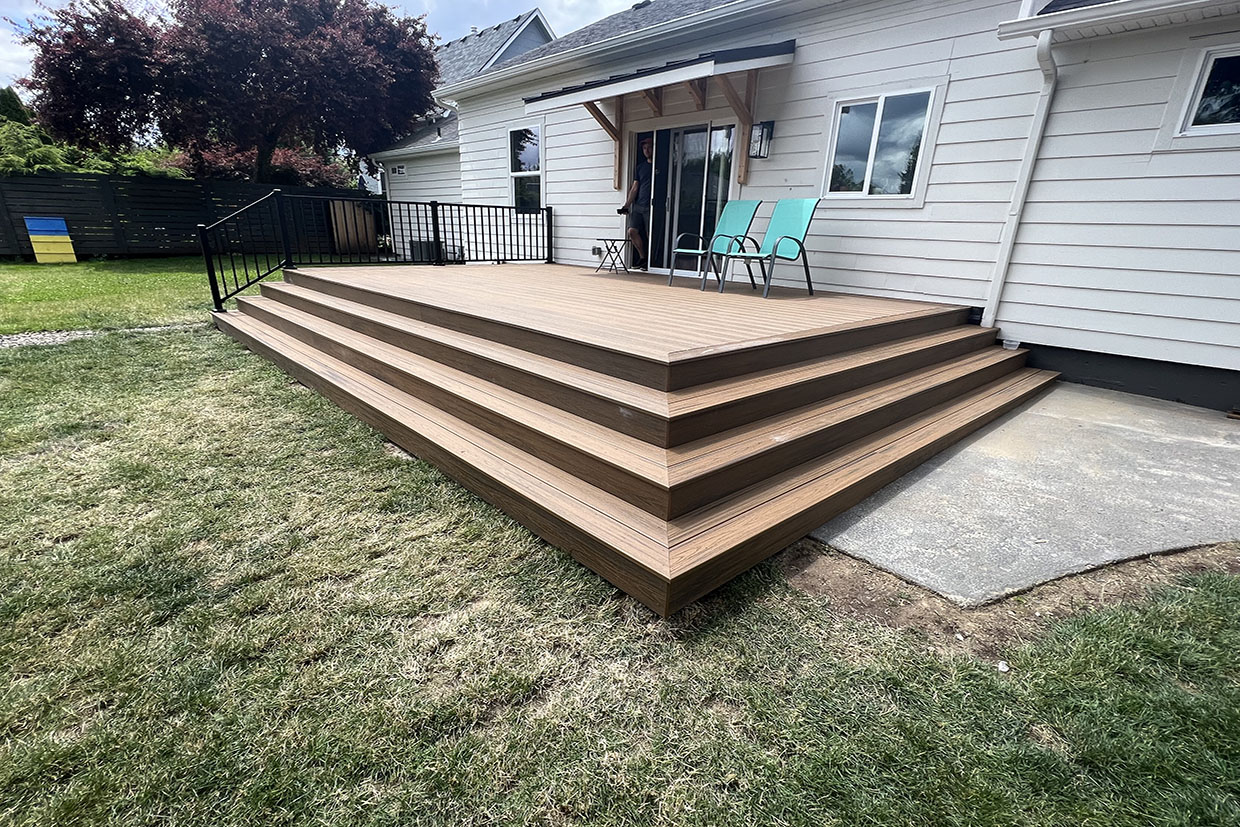
A ground level deck is more than just an outdoor addition; it’s a gateway to a new lifestyle. Imagine hosting vibrant summer parties, spending quiet evenings under the stars, or simply enjoying your morning coffee surrounded by the beauty of your garden – all made possible by your ground level deck.
At Grand Decks, we specialize in turning such dreams into reality. We understand the unique benefits that ground level decks offer and our expert team is adept at designing and constructing decks that perfectly complement your home, lifestyle, and budget. Our experience and dedication to quality ensure that your deck is not only visually stunning but also durable and safe.
Whether you already have a design in mind or need assistance creating a vision for your outdoor space, we’re here to help. We offer comprehensive consultation services, walking you through the various options, materials, and design possibilities to create a customized plan for your ground level deck.
Don’t let your dream deck remain just a dream. Allow us to help you make it a reality. Contact Grand Decks today for more information or to schedule a consultation. We can’t wait to work with you on your exciting new project!


